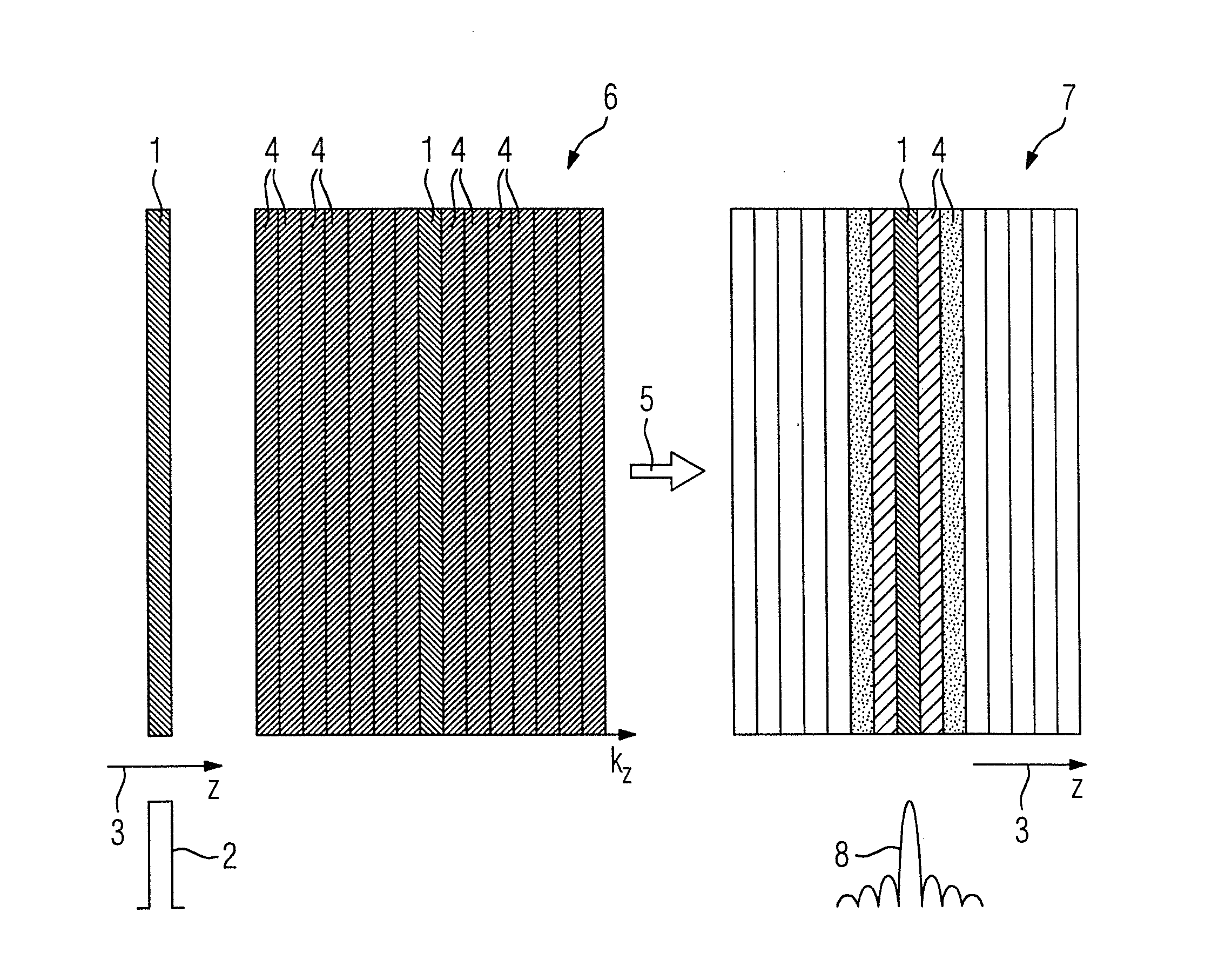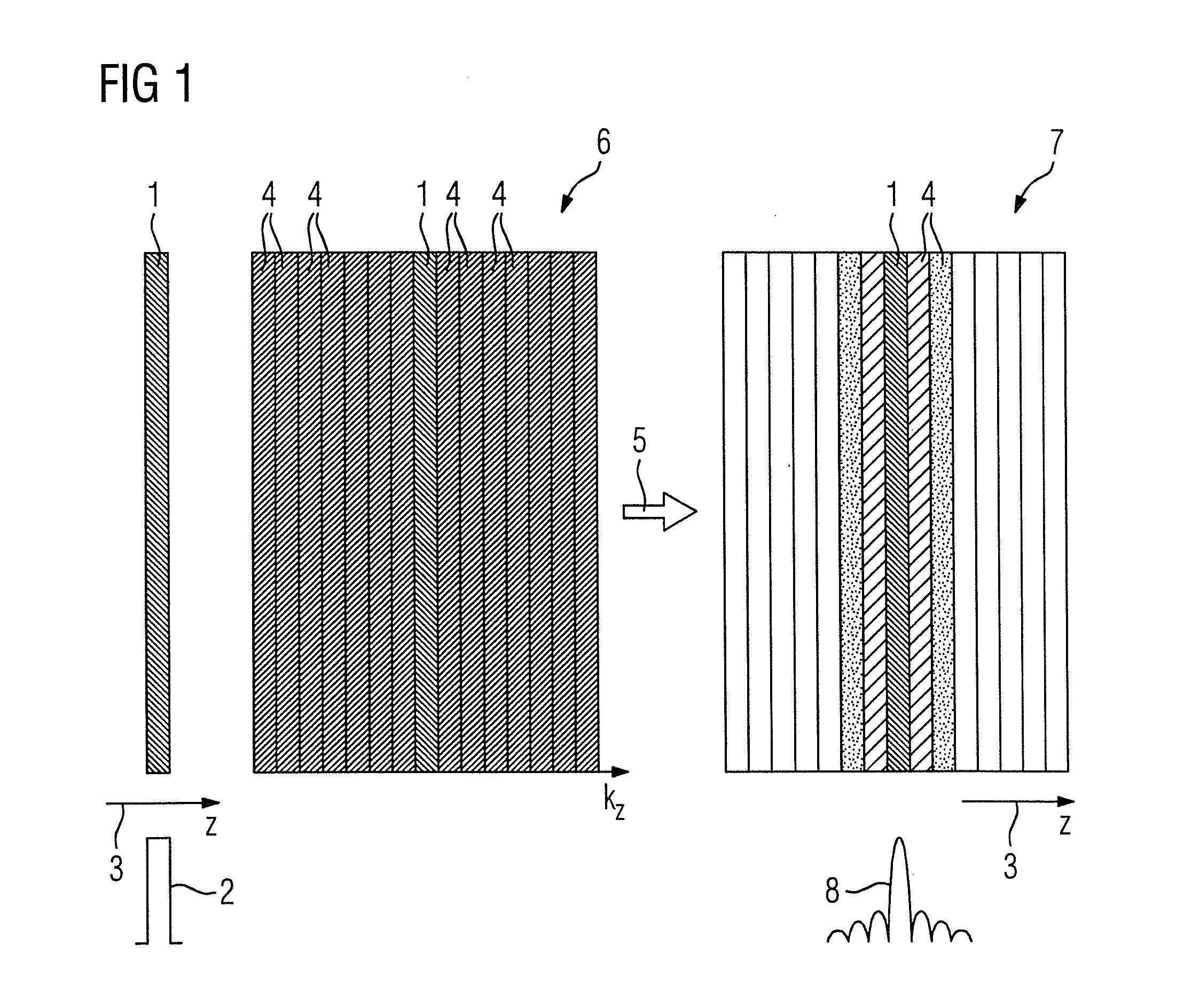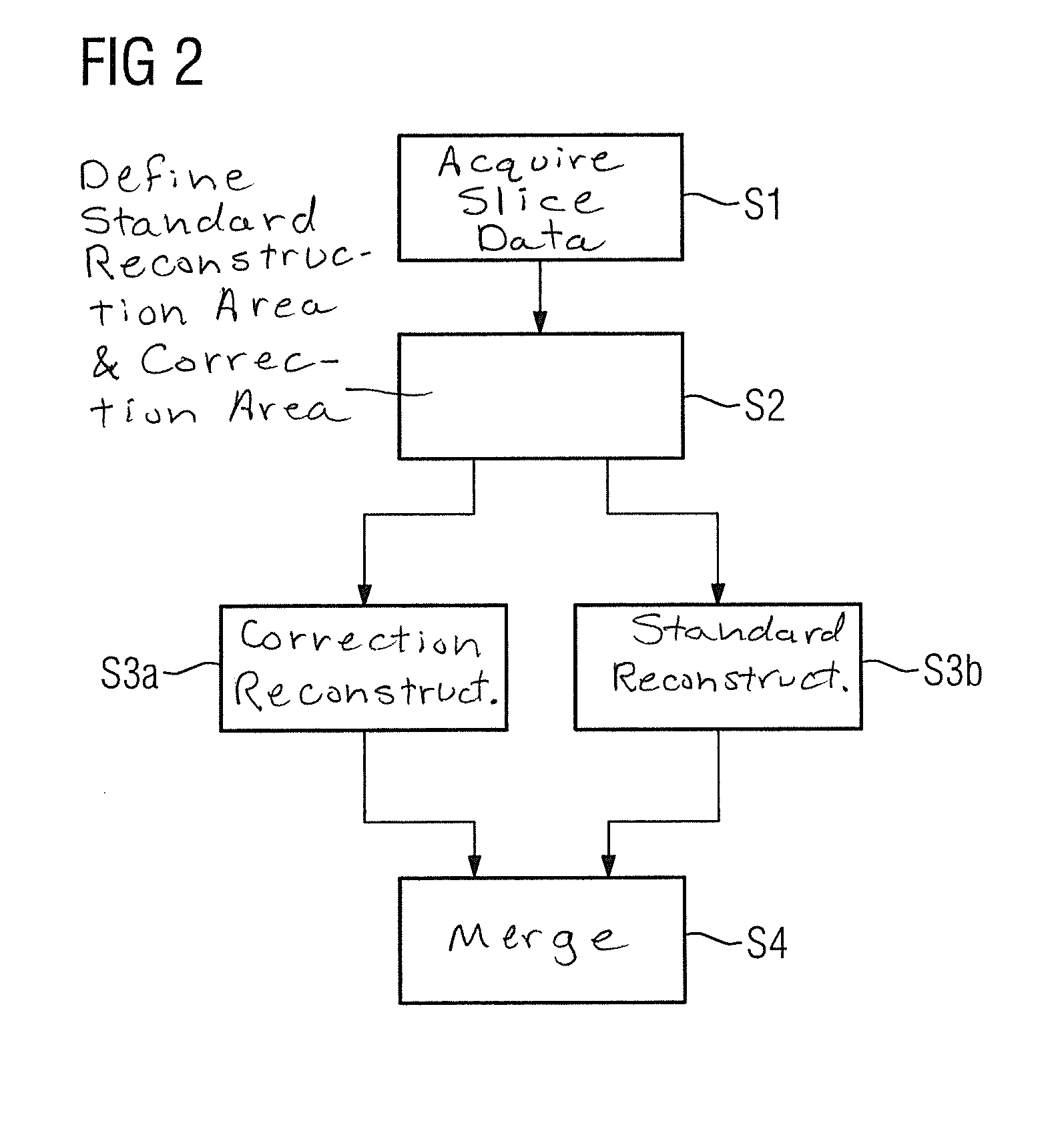Method and magnetic resonance apparatus for reconstruction of a three-dimensional image data set from data acquired when a noise object distorted the magnetic field in the apparatus
a three-dimensional image and data acquisition technology, applied in the field of three-dimensional magnetic resonance image reconstruction, can solve the problems of distorted magnetic field, artifacts in the reconstructed image, and the inability to reconstruct diagnostic-quality magnetic resonance images, so as to achieve the effect of improving image quality
- Summary
- Abstract
- Description
- Claims
- Application Information
AI Technical Summary
Benefits of technology
Problems solved by technology
Method used
Image
Examples
Embodiment Construction
[0032]FIG. 1 shows in detail the problem underlying the present invention with the example of a target slice 1 having no distortions. If one considers the ideal profile 2 of the magnetic resonance signals, in other words slice data, in the slice selection direction 3, which here when using the SEMAC method also corresponds to the supplementary encoding direction, an idealized rectangular function is produced because the entire signal originates from said target slice 1. When using the SEMAC method, however, not only the target slice 1 is scanned as the central partition slice but in further phase-encoding steps along the slice selection direction 3 as a supplementary encoding direction fourteen adjacent partition slices 4 are likewise scanned in the present case, which means that fifteen phase-encoding steps are used in the present case.
[0033]In order to carry out the SEMAC correction, the slice data of the target slice 1 and also of the adjacent partition slices 4 present in the k-...
PUM
 Login to View More
Login to View More Abstract
Description
Claims
Application Information
 Login to View More
Login to View More - R&D
- Intellectual Property
- Life Sciences
- Materials
- Tech Scout
- Unparalleled Data Quality
- Higher Quality Content
- 60% Fewer Hallucinations
Browse by: Latest US Patents, China's latest patents, Technical Efficacy Thesaurus, Application Domain, Technology Topic, Popular Technical Reports.
© 2025 PatSnap. All rights reserved.Legal|Privacy policy|Modern Slavery Act Transparency Statement|Sitemap|About US| Contact US: help@patsnap.com



